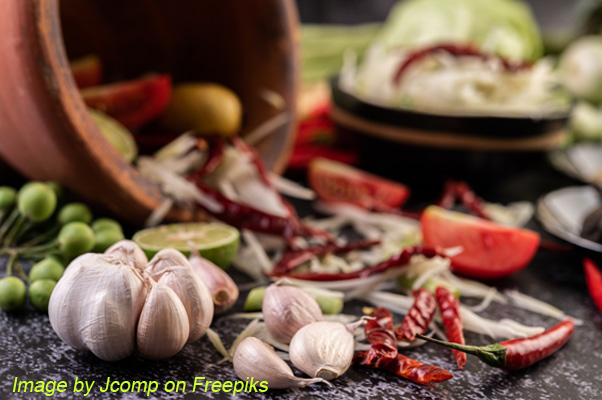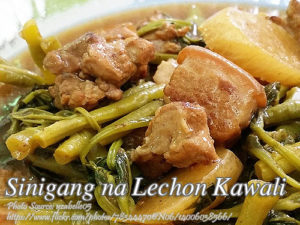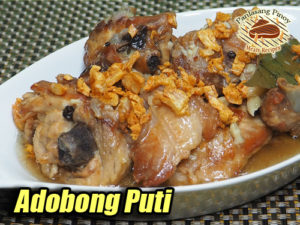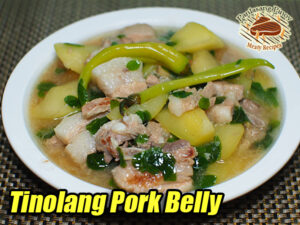Filipino cuisine is known for its bold and flavorful dishes, and one of the keys to achieving that delicious taste is the use of spices and seasonings. From garlic to ginger to bay leaves, these ingredients can transform a simple meat dish into a mouth-watering feast. If you’re new to Filipino cooking and don’t know where to start with spices and seasonings, this beginner’s guide will help you get started.
Garlic (Bawang)
Garlic is a staple ingredient in Filipino cooking and is used in many savory dishes such as adobo, kare-kare, and lechon belly. This pungent and aromatic bulb is known for its health benefits and is rich in antioxidants that can boost the immune system. In Filipino cuisine, garlic is usually minced or crushed and sautéed in oil before adding other ingredients to the dish. It can also be used as a seasoning for rice, and is often served as a condiment alongside main dishes.

Onion (sibuyas)
Onion is another staple ingredient in Filipino cuisine is onion. Like garlic, it is used in many savory dishes such as stews, soups, and sautés. It adds a sweet and savory flavor to dishes and can be sautéed, caramelized, or used raw as a garnish. In Filipino cuisine, red onions are often used for their mild and sweet flavor, while yellow onions are used for their stronger and more pungent taste.
Ginger (luya)
Ginger is a root that is used both as a spice and a medicinal herb in Filipino cuisine. It has a spicy and slightly sweet taste and is often used in meat dishes such as adobo, tinola, and arroz caldo. Ginger is known for its anti-inflammatory and digestive properties and is often used to alleviate nausea and motion sickness. In Filipino cuisine, ginger is usually sliced or grated and sautéed with other ingredients to release its flavor.
Lemongrass (tanglad)
Lemongrass is a fragrant herb that is used in many Southeast Asian cuisines, including Filipino cuisine. It has a lemony and slightly sweet taste and is often used to flavor meat and seafood dishes. In Filipino cuisine, lemongrass is commonly used in soups and stews such as sinigang and bulalo. It can also be used to make tea and is known for its calming and soothing properties.
Bay leaves (dahon ng laurel)
Bay leaves are a staple herb in Filipino cuisine and are used to add flavor and aroma to stews, soups, and meat dishes. They have a subtle and slightly sweet taste and are often used in dishes such as adobo, menudo, and afritada. Bay leaves are usually added to the dish whole and are removed before serving.
Vinegar (suka)
Vinegar is a common ingredient in Filipino cuisine and is often used in marinades, sauces, and dipping sauces. It is made from fermented coconut water or sugarcane juice and is known for its acidic and slightly sweet taste. In Filipino cuisine, vinegar is used to balance the rich and savory flavors of meat dishes such as adobo and pork sinigang. It can also be used as a dipping sauce for fried dishes such as lumpia and fried chicken.
Soy sauce (toyo)
Soy sauce is another staple ingredient in Filipino cuisine and is used in many savory dishes such as adobo, pancit, and bistek. It is made from fermented soybeans and has a salty and savory taste. In Filipino cuisine, there are different types of soy sauce such as light, dark, and sweet soy sauce. Each type has a distinct flavor profile and is used for different purposes. Light soy sauce is used for seasoning and marinades, while dark soy sauce is used for coloring and adding depth to dishes. But usually they are interchangeable when used in marinades or other stir fried dishes.
Black pepper (paminta)
Black pepper is a common spice used in Filipino cuisine and is often added to meat dishes such as adobo, bistek, and mechado. It has a pungent and spicy taste and is known for its warming and digestive properties. In Filipino cuisine, black pepper is usually added during the cooking process to enhance the flavor of the dish.
Chili peppers (sili)
Chili peppers are a popular ingredient in Filipino cuisine and are used to add heat and spice to dishes. There are many types of chili peppers used in Filipino cooking, including bird’s eye chili, long chili, and siling labuyo. These peppers can be added whole or chopped to dishes such as adobo, sinigang, and kinilaw. Chili peppers are also commonly used to make condiments such as chili oil and vinegar.
Fish sauce (patis)
Fish sauce is a pungent and salty condiment made from fermented fish. It is commonly used in Southeast Asian cuisines, including Filipino cuisine. In Filipino cuisine, fish sauce is used as a seasoning and is often added to soups and stews such as sinigang and kare-kare. It can also be used as a dipping sauce for grilled meats and seafood.
Coconut milk (gata ng niyog)
Coconut milk is a creamy and rich ingredient that is used in many Filipino dishes such as ginataang gulay, bicol express, and chicken curry. It is made by grating fresh coconut meat and extracting the liquid. Coconut milk is known for its sweetness and nutty flavor and is often used to balance spicy and savory dishes.
Calamansi (Kalamansi)
Calamansi is a popular citrus fruit in the Philippines and is commonly used as a souring agent in Filipino cuisine. It is similar in appearance to a small lime or kumquat, with a thin, greenish-yellow rind and a juicy, acidic pulp. Calamansi is used to add tartness and acidity to dishes such as sinigang, adobo, and kinilaw. It is also commonly used as a condiment, where its juice is squeezed over grilled meats, seafood, and vegetables, or added to dipping sauces.
Annatto (Achuete)
Annatto – A seed used for its red color, annatto is commonly used as a natural food coloring in Filipino dishes such as rice cakes (kakanin) and stews. Annatto seeds can be ground into a powder or steeped in oil to release its vibrant red hue. Besides adding color, annatto also has a slightly nutty and earthy flavor that complements the rich flavors of Filipino stews and other dishes.
Tamarind (sampalok)
Tamarind – A sour fruit commonly used as a souring agent in Filipino dishes such as sinigang and adobo. Tamarind is also used to make a popular Filipino candy called tamarind balls. Tamarind can be purchased in different forms, such as whole pods, pulp, or concentrate. The sourness of tamarind helps balance the richness of meat in stews, while its tangy flavor adds complexity to the sweet and sour taste of sinigang.
Pandan Leaves (pandan)
Pandan Leaves (pandan) – Pandan leaves have a sweet and floral aroma and are commonly used in Filipino desserts such as rice cakes (bibingka) and jelly (gulaman). Pandan leaves can also be used to flavor rice, curries, and other savory dishes. These long, slender leaves are usually tied in a knot and added to the dish while cooking, infusing it with a subtle yet distinct flavor and aroma. Pandan leaves are also believed to have health benefits, such as reducing pain and inflammation.
Turmeric (Luyang Dilaw)
Turmeric – A root used for its vibrant yellow color and subtle flavor, turmeric is commonly used in Filipino stews such as adobong manok sa dilaw and in rice dishes such as bringhe. Turmeric has a slightly bitter and peppery flavor, and is often used in combination with other spices like ginger and garlic. Besides adding color and flavor, turmeric is also believed to have anti-inflammatory and antioxidant properties, making it a valuable ingredient in many traditional medicines.
Shrimp Paste (Bagoong na alamang)
Shrimp Paste – A fermented shrimp condiment that is commonly used as a seasoning in Filipino dishes such as kare-kare, binagoongang baboy, and ginisang kangkong. Shrimp paste is made by mixing fermented shrimp with salt and spices, resulting in a pungent and salty flavor. Shrimp paste can be used as a base for sauces or added directly to a dish for a umami-rich taste. While it may be an acquired taste for some, shrimp paste is an essential ingredient in many Filipino dishes and adds a unique flavor that cannot be replicated with other seasonings.
Filipino spices and seasonings are an essential part of Filipino cuisine and are used to add flavor, aroma, and complexity to dishes. Garlic, onion, ginger, lemongrass, bay leaves, vinegar, soy sauce, black pepper, chili peppers, fish sauce, and coconut milk are just some of the many ingredients used in Filipino cooking. Whether you’re a beginner or an experienced cook, experimenting with these spices and seasonings can help you create delicious and authentic Filipino dishes that will impress your family and friends.




